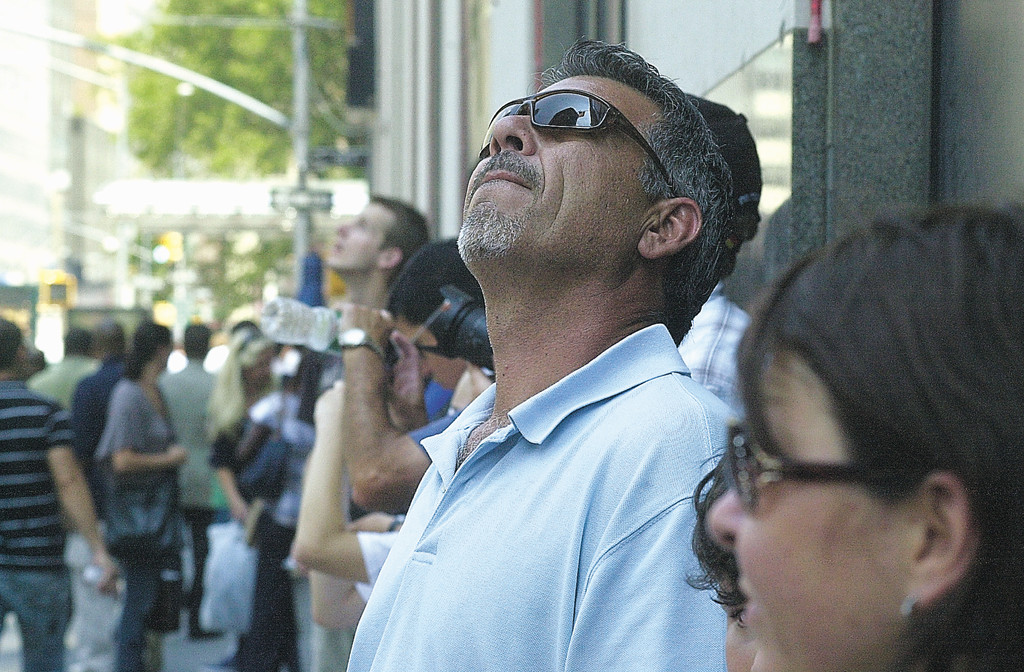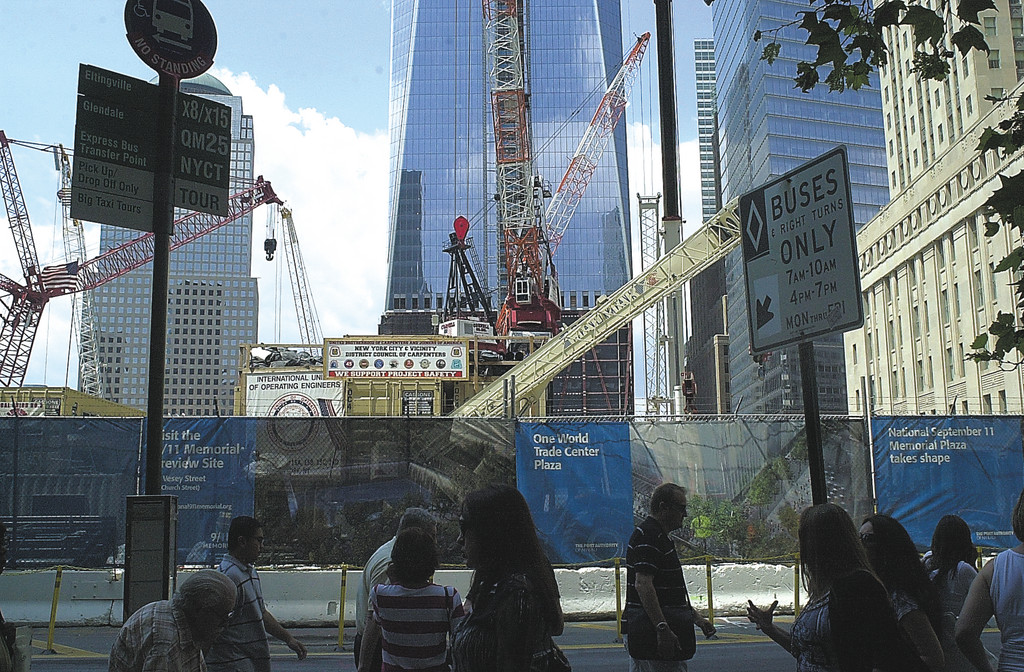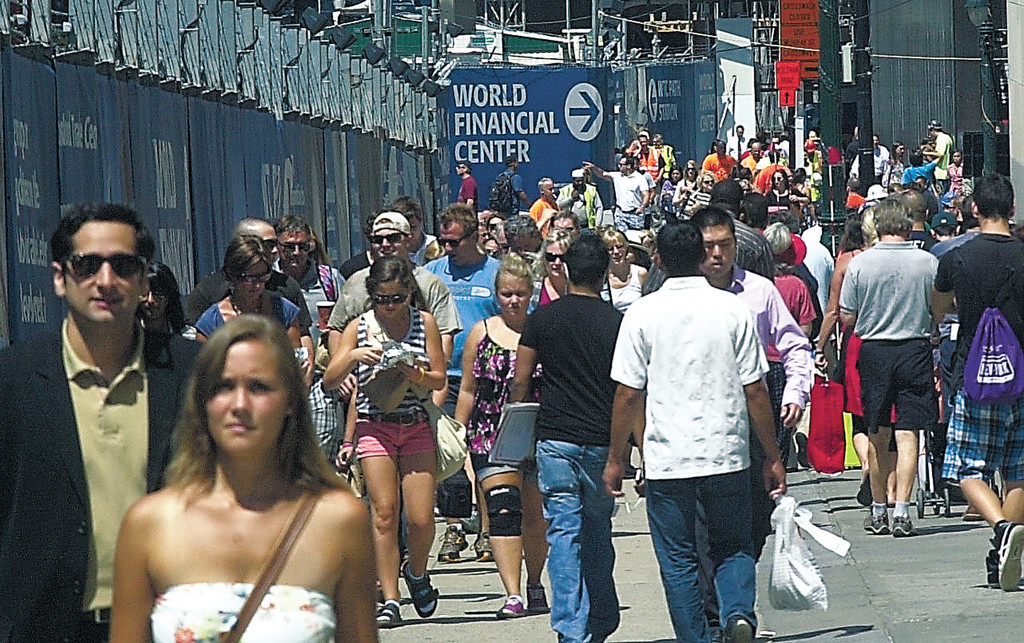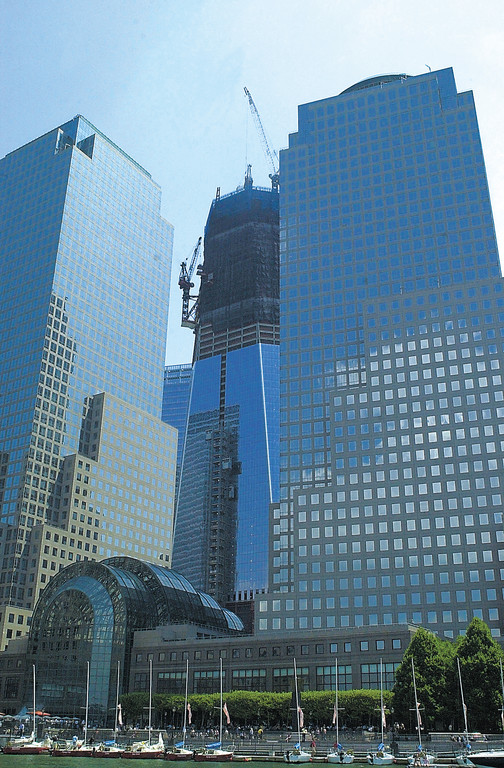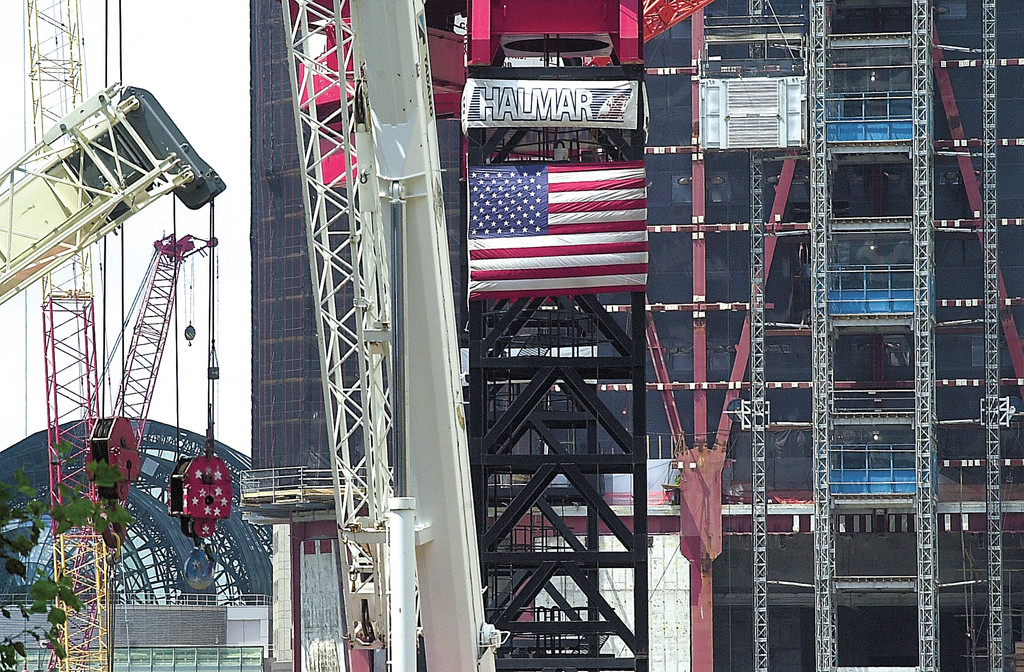Rebuilding ground zero
Halfway complete, One World Trade Center already soars into the sky
On Aug. 5, I traveled to ground zero in Lower Manhattan to photograph the epicenter of the worst terrorist attacks on American soil, nearly 10 years later. As I scaled the subway steps leading to Vesey Street, on the north side of what had been the World Trade Center before September 11, 2001, I was uncertain what to expect when I reached the top of the staircase. The last time that I visited ground zero, in August 2006, I felt forlorn. It was a hauntingly empty place. What would I find this time?
Thank goodness, I found people –– hundreds, even thousands of people, hurrying in all directions, many stopping to photograph One World Trade Center, the glass-and-steel architectural marvel that is now a little more than halfway complete and will replace the Twin Towers. When finished in 2013, this structure, this magnificent structure, will soar 1,776 feet into the air –– with 71 office floors, a grand public lobby that will feature 50-foot ceilings, an observation deck more than 1,200 feet above the ground, an array of trendy shops and 3 million square feet of office space.
Renowned architect David Childs, of Skidmore, Owings and Merrill, LLP, designed the building, which evokes the grand art-deco style of architecture employed at the Chrysler Building and Empire State Building in the 1930s. The Port Authority of New York and New Jersey is developing this super-structure at a cost of $3 billion. Work began in 2008.
Construction of One World Trade Center has been a challenge from the beginning. Here’s an excerpt from the Port Authority’s 2008 fourth quarter report on the project:
“Construction of the foundation for One World Trade Center, the Freedom Tower was a significant engineering and construction feat and represented one of the most challenging portions of construction … because it was constructed adjacent to and around an operating railroad –– the Path. The tower’s foundations had to be built among a maze of track switches and [electrified] third rail while maintaining Path service for commuters.”


